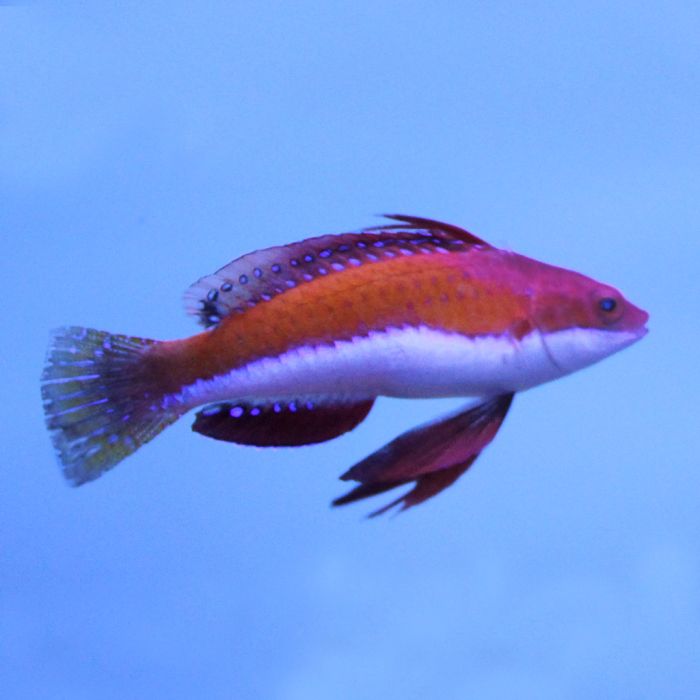Social Fairy Wrasse (Indian Ocean)
Wrasses are prone to jumping from the aquarium when startled or excited so we recommend a secure lid. They feel most secure when there is plenty of live rock to hide in, as well as open space for swimming. Most species may be kept in pairs or harems as long as they are added together or females first. They do not appreciate living with other species of wrasse, so any aquarium with several species must be large enough and the most peaceful species added first.
They should be fed two to three times a day plenty of high quality meaty items, frozen Mysis shrimp, krill, chopped seafood, marine algae and Spirulina.
Fairy wrasses are easy to keep and have active personalities. They are safe with most invertebrates except small shrimp and crabs. They do not bother corals or anemones. They may bully smaller fish such as flasher wrasses, however most are not big enough to live with large or very aggressive fish, either. Most species can be kept together in systems at least 100 gallons, with the most peaceful species added first.
At night time fairy wrasses hide in the rockwork and wrap themselves in a mucus cocoon to hide their scent from predators. This cocoon may be visible in the morning, and will soon dissipate into the water, and a new cocoon created each night.
Deep Scarlet color and huge rounded pelvic fins distinguish the spectacular Social, or Ruby, fairy wrasse. Its head is especially dark red and its body may shimmer gold. As a nice contrast its belly is snowy white, and there are a myriad of sapphire to turquoise speckles arranged in broken lines running across its body and fins. The male’s dorsal fin has a decorative high spike. A male in courtship display is even more impressive; his fins may shimmer white to baby blue. Females are smaller with many pale speckles over their bodies, pencil thin baby blue stripes over their faces and backs, and shorter fins. It is typically available from the Indian Ocean around Sri Lanka. This species is normally very peaceful; it grows up to 3 inches and needs an aquarium of at least 50 gallons.
















